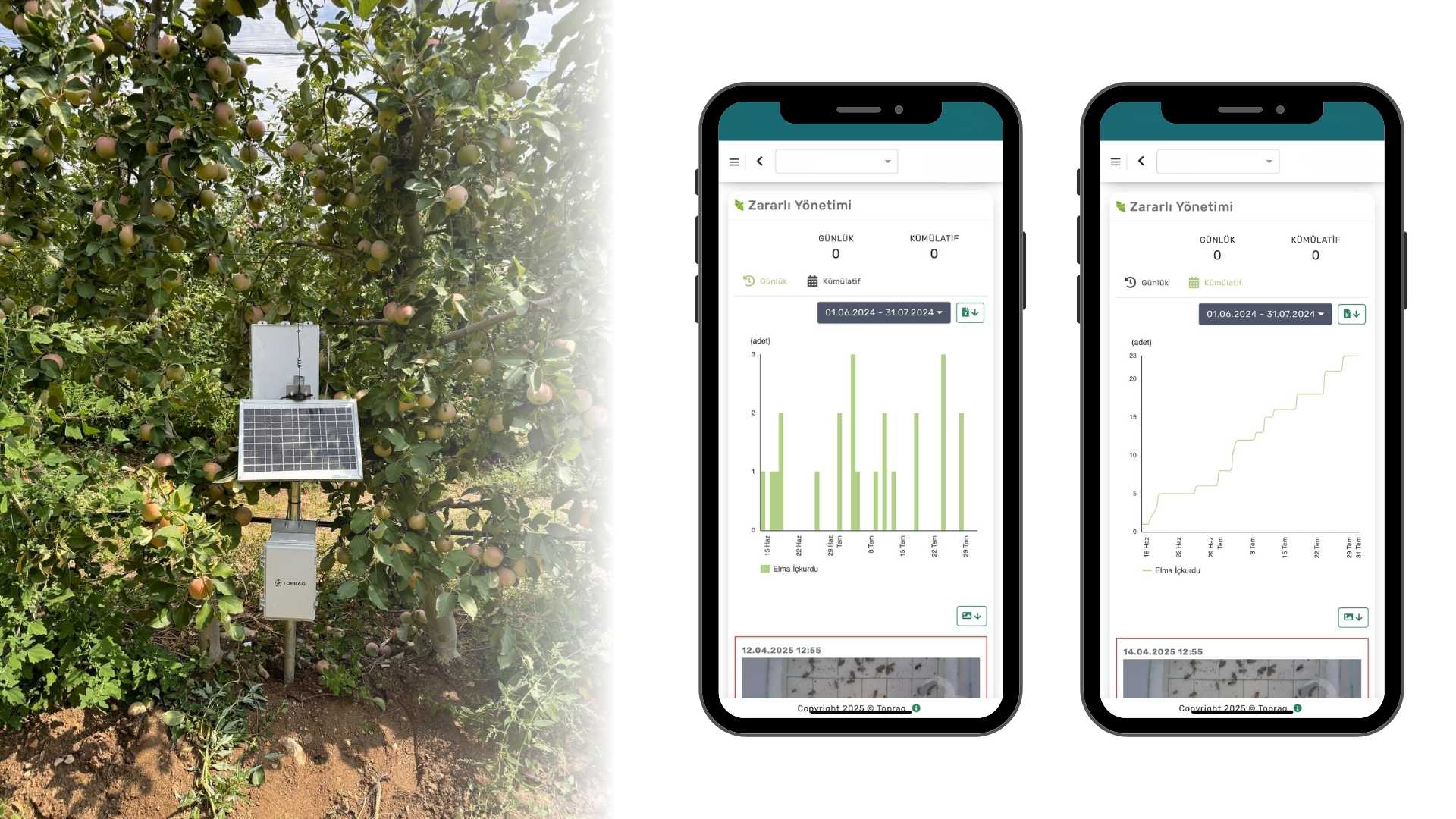Codling moth (Cydia pomonella) is one of the most damaging pests in apple production, severely affecting fruit quality and yield. Widespread across almost every apple-growing region, this pest causes significant economic losses, especially by damaging fruit during the development stage.
Although apples are the primary host, codling moth can also infest pears, walnuts, quinces, peaches, and plums. In mixed orchards (e.g., apple with walnut or pear), the risk increases, making regular codling moth monitoring essential.
The larvae bore into the fruit to feed, damaging internal tissues and reducing market value. As infestation rates rise, so do crop losses, often making it impossible to meet export and domestic quality standards.
How to Control Codling Moths?
The key to codling moth control is stopping larvae before they reach the fruit. However, if intervention is not timed correctly or uses the wrong method, even chemical pesticides can fail. That’s why understanding the insect’s biology and monitoring its population consistently is crucial.
Codling moths typically have 2–3 generations per year. Each generation introduces new larvae that target fruit. To be effective, each generation must be controlled at the right time. But due to variables like temperature, elevation, region, and pest pressure, timing can be complex.
Let’s Talk – Share Your Contact Information!
How to Prevent Codling Moth Infestation?
One of the most effective strategies is using pheromone traps to monitor codling moth activity in real time. These traps mimic the female moth’s scent to attract and capture males, disrupting mating cycles and helping farmers collect accurate data on pest density.
Going beyond traditional traps, integrating smart farming technology gives growers a significant advantage.

Digital Codling Moth Monitoring with T-Trap
Developed by Topraq, the T-Trap Digital Pheromone Trap Station makes codling moth control smarter, more accurate, and sustainable. This system not only traps pests, but also:
- Digitally reports population density
- Visualizes daily and cumulative data with charts
- Enables remote monitoring—no need to visit the field
- Optimizes spray timing, saving up to 35% on inputs
- Provides access to all data via web and mobile apps
This allows farmers to make more informed decisions by tracking pest behavior locally and regionally.
Using T-Weather for Degree-Day Modeling
Effective codling moth control requires more than field monitoring—it also depends on understanding the pest’s biological development, which is heavily influenced by temperature. That’s why calculating degree days is essential to predict when the pest will become active.
The T-Weather Agricultural Weather Station from Topraq records real-time, site-specific temperature data and uses it to calculate the accumulated degree days for codling moth development. With this data, farmers can:
- Predict egg hatch timing
- Track larval and pupal stages
- Forecast first flights and ideal spray windows
The system also incorporates weather forecasts to offer predictive insights, not just historical data. This means farmers can track today’s population with T-Trap and forecast tomorrow’s lifecycle stages with T-Weather—ensuring precision pest management.
When to Apply Codling Moth Insecticide?
Timing is the most critical factor in codling moth control. With T-Trap, farmers can detect the pest’s first flight and calculate intervention thresholds accordingly. Accurate timing, especially for the second and third generations, reduces unnecessary pesticide use and improves control outcomes.
T-Trap’s integrated digital platform supports growers with:
- Timely pest intervention
- Reduced chemical use, higher efficiency
- Eco-friendly, IPM-compatible pest control
- Labor and cost savings
Effective codling moth management no longer relies solely on field observations or past experiences. Digital agriculture tools like T-Trap are now essential allies in integrated pest management (IPM).
If you want to monitor pest pressure in your orchard in real time and apply treatments at the right moment, explore the T-Trap Digital Pheromone Trap Station today.

